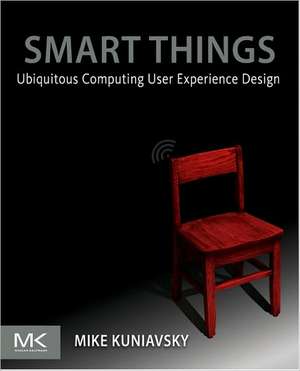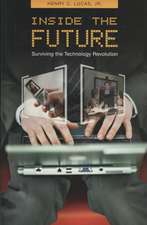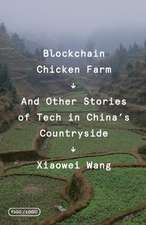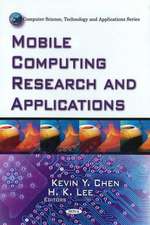Smart Things: Ubiquitous Computing User Experience Design
Autor Mike Kuniavskyen Limba Engleză Paperback – 13 sep 2010
Smart Things presents a problem-solving approach to addressing designers' needs and concentrates on process, rather than technological detail, to keep from being quickly outdated. It pays close attention to the capabilities and limitations of the medium in question and discusses the tradeoffs and challenges of design in a commercial environment. Divided into two sections, frameworks and techniques, the book discusses broad design methods and case studies that reflect key aspects of these approaches. The book then presents a set of techniques highly valuable to a practicing designer. It is intentionally not a comprehensive tutorial of user-centered design'as that is covered in many other books'but it is a handful of techniques useful when designing ubiquitous computing user experiences.
In short, Smart Things gives its readers both the "why" of this kind of design and the "how," in well-defined chunks.
- Tackles design of products in the post-Web world where computers no longer have to be monolithic, expensive general-purpose devices
- Features broad frameworks and processes, practical advice to help approach specifics, and techniques for the unique design challenges
- Presents case studies that describe, in detail, how others have solved problems, managed trade-offs, and met successes
Preț: 193.68 lei
Preț vechi: 286.39 lei
-32% Nou
Puncte Express: 291
Preț estimativ în valută:
37.06€ • 40.25$ • 31.13£
37.06€ • 40.25$ • 31.13£
Carte tipărită la comandă
Livrare economică 15-29 aprilie
Preluare comenzi: 021 569.72.76
Specificații
ISBN-13: 9780123748997
ISBN-10: 0123748992
Pagini: 336
Ilustrații: Illustrations
Dimensiuni: 191 x 235 x 15 mm
Greutate: 0.7 kg
Editura: ELSEVIER SCIENCE
ISBN-10: 0123748992
Pagini: 336
Ilustrații: Illustrations
Dimensiuni: 191 x 235 x 15 mm
Greutate: 0.7 kg
Editura: ELSEVIER SCIENCE
Public țintă
Primary audiencesIndustrial designers. Many people who are primarily industrial designers (at firms such as IDEO, Ziba, Pentagram, Lunar, etc.) are hired based on the perception that the design of anything that any non-software consumer product needs to be designed by industrial designers. Since they get tapped to do work that includes interaction and service design, this book will help them understand what needs to be done (and what skills they can look for in team members).
Software or Web Interaction/Interface designers. The first Web designers came to the medium from traditional graphic design and discovered how different it is, even though it looks like it should be a similar set of skills. Now software and Web designers are discovering the same thing about designing for mobile an ubiquitous products and are looking for resources to help them understand where the differences lie, so they can avoid reinventing the wheel.
Ubiquitous computing designers. Exclusively the concern of corporate and university research labs until recently, the emphasis in ubiquitous computing was primarily on technology, and not on design. However, many people now find themselves designing ubiquitous computing systems (maybe under the heading of entertainment, peripheral or appliance design), and some may even recognize the relationship to ubiquitous computing.
Mobile application designers. There is a growing population of designers created applications for mobile services full-time. Their design challenges regularly intersect with the ideas of ubiquitous computing user experience. Other than informal networks and competitive analysis, there are few sources of information about the design process of interactive products for this medium.
Secondary audiences
Developers working in mobile media. Programmers always end up doing some amount of design (and, too often, all of the design) of the products they're coding for. Programmers are especially comfortable looking in documentation for solutions to their problems. Although this book won't have the kind of "cut and paste" easy solution for them, it'll have guidance for what's worked in the past, which is often as useful.
Project/Product managers. Much like programmers, product managers, whose job requirement is to balance user and company needs, end up being the designers of the services they're shepherding.
Cuprins
Part I: F rameworks 1Chapter 1: Introduction: The Middle of Moore's Law Chapter 2: W hat Is User Experience Design and Who Creates It?Chapter 3: Interaction MetaphorsChapter 4: Information Is a MaterialChapter 5: The Whirlpool centralpark™ Refrigerator: The Design of an Accessory PortChapter 6: Information Shadows Chapter 7: Clickables: Toys and Information ShadowsChapter 8: Devices Are Service AvatarsChapter 9: The iPod: A Service AvatarChapter 10: AppliancenessChapter 11: RoomWizard: An Appliance for Office SocietyChapter 12: Scales of ExperienceChapter 13: Plasma Poster: Unifying Work Cultures with a Digital Poster
Part II T echniquesChapter 14: Observation and IdeationChapter 15: Simulation and SketchingChapter 16: Nabaztag, an Ambiguous AvatarChapter 17: Augmentations and MashupsChapter 18: Common Design ChallengesChapter 19: From Invisible Computing to Everyware
Part II T echniquesChapter 14: Observation and IdeationChapter 15: Simulation and SketchingChapter 16: Nabaztag, an Ambiguous AvatarChapter 17: Augmentations and MashupsChapter 18: Common Design ChallengesChapter 19: From Invisible Computing to Everyware
Recenzii
Finally a book about ubiquitous computing that covers the broad challenges of designing for user experiences over a vast range of devices, device sizes from micro to meso to macro, and crucially, ecologies of devices. An evocative tour thru past design efforts and devices/systems that beautifully sets the stage for the design challenges we are quickly marching into. -- John Seely Brown, Former Chief Scientist, Xerox Corporation; Former Director, Palo Alto Research Center (PARC); author The Social Life of Information and The Power of Pull
"This book explains in no-nonsense language why you should care that computing has become ubiquitous and what the implications are for people who design things. Even better, it lays out suggestions as to how to use this knowledge to make better things. If you've ever wondered how interface, interaction, information, and industrial design overlap, what they have to do with user experience, and how it's all affecting your life, you should read this book." -- Tom Igoe, Associate Professor, NYU, Interactive Telecommunications, author of Physical Computing and Making Things Talk
"Smart Things is a rare artifact from the future that packs immediate practical value. I predict its coverage of multi-scale design will change user experience practice forever. It is the most useful book about the future of design I've read and has changed the way I work. Mike Kuniavsky doesn't just write about the future, he lives there... and now so can you." -- Peter Morville, President, Semantic Studios, author, Ambient Findability
"Provocative and pragmatic, Smart Things describes an important new approach to the design of consumer electronics. Its chapters explain why the design of digital products is different than other kinds of design and provide valuable techniques that unify the disciplines of interaction and industrial design." – Charles L Jones, Vice President, Global Consumer Design, Whirlpool
"Web designer Mike Kuniavsky, who has spent his career dissecting people's relationship to digital technology, hangs out at Four Barrel Coffee precisely because he can disconnect from the Internet and concentrate on his thoughts. That's where he wrote his upcoming book on consumer electronics design: Smart Things."--The Los Angeles Times
"This book explains in no-nonsense language why you should care that computing has become ubiquitous and what the implications are for people who design things. Even better, it lays out suggestions as to how to use this knowledge to make better things. If you've ever wondered how interface, interaction, information, and industrial design overlap, what they have to do with user experience, and how it's all affecting your life, you should read this book." -- Tom Igoe, Associate Professor, NYU, Interactive Telecommunications, author of Physical Computing and Making Things Talk
"Smart Things is a rare artifact from the future that packs immediate practical value. I predict its coverage of multi-scale design will change user experience practice forever. It is the most useful book about the future of design I've read and has changed the way I work. Mike Kuniavsky doesn't just write about the future, he lives there... and now so can you." -- Peter Morville, President, Semantic Studios, author, Ambient Findability
"Provocative and pragmatic, Smart Things describes an important new approach to the design of consumer electronics. Its chapters explain why the design of digital products is different than other kinds of design and provide valuable techniques that unify the disciplines of interaction and industrial design." – Charles L Jones, Vice President, Global Consumer Design, Whirlpool
"Web designer Mike Kuniavsky, who has spent his career dissecting people's relationship to digital technology, hangs out at Four Barrel Coffee precisely because he can disconnect from the Internet and concentrate on his thoughts. That's where he wrote his upcoming book on consumer electronics design: Smart Things."--The Los Angeles Times



















